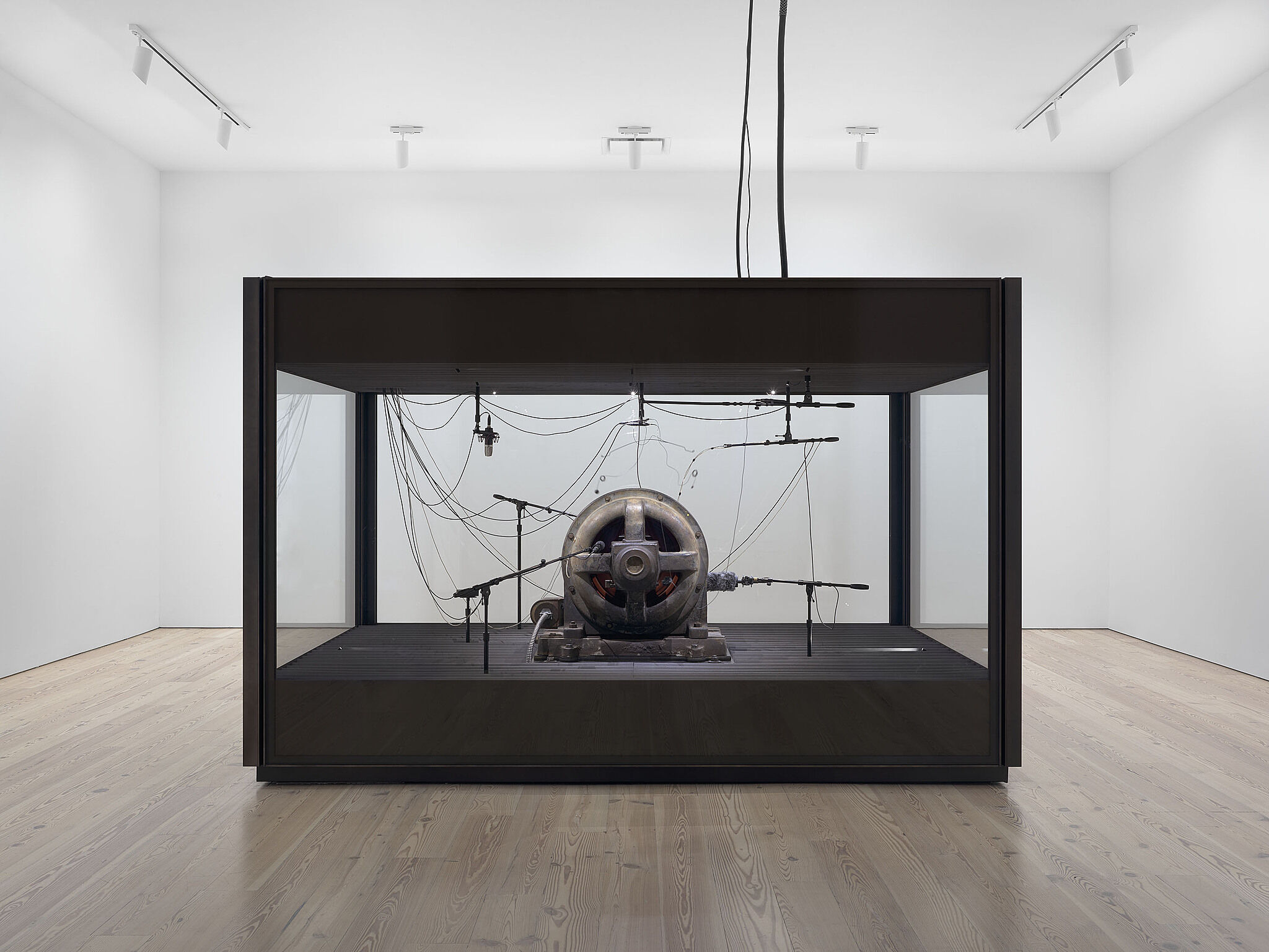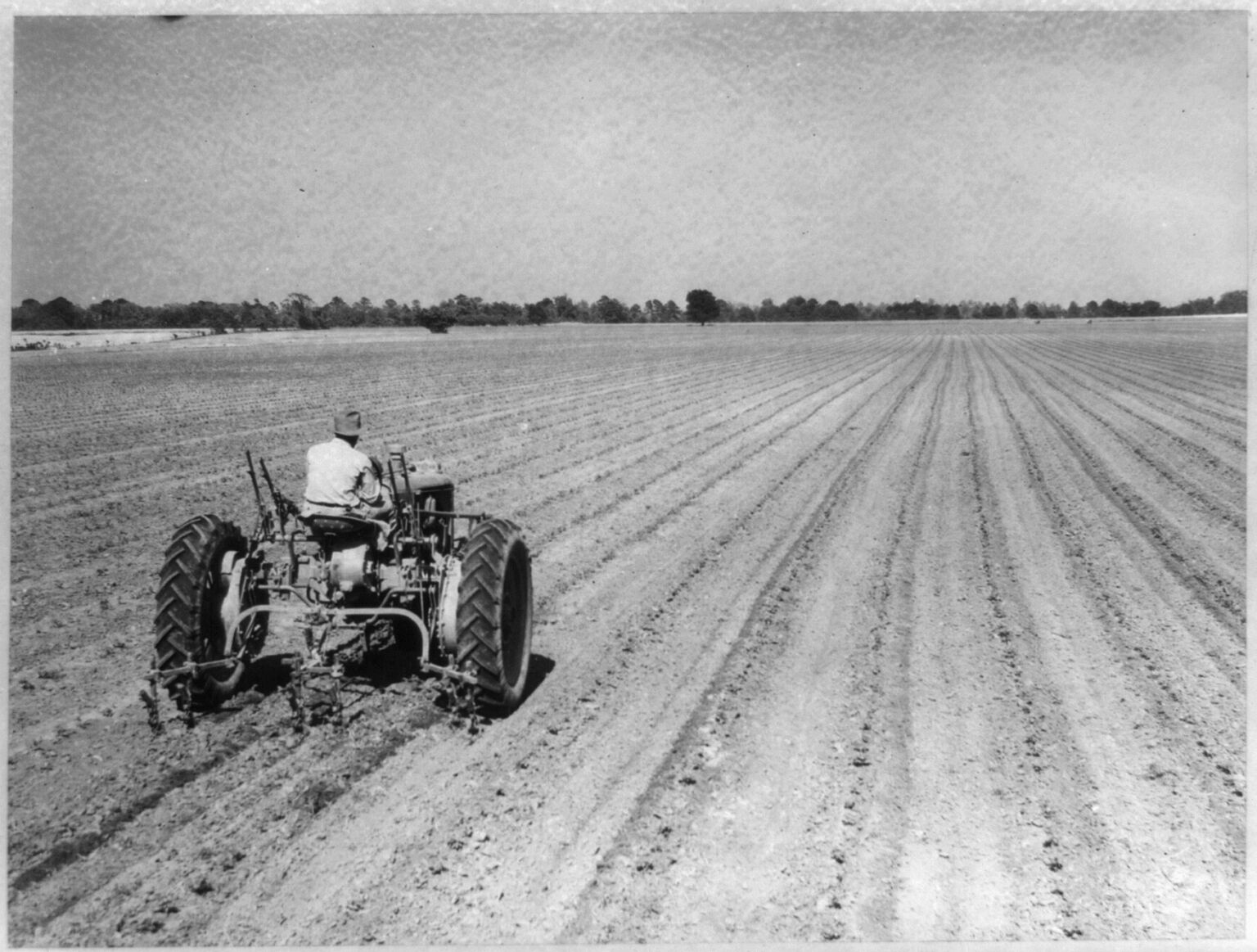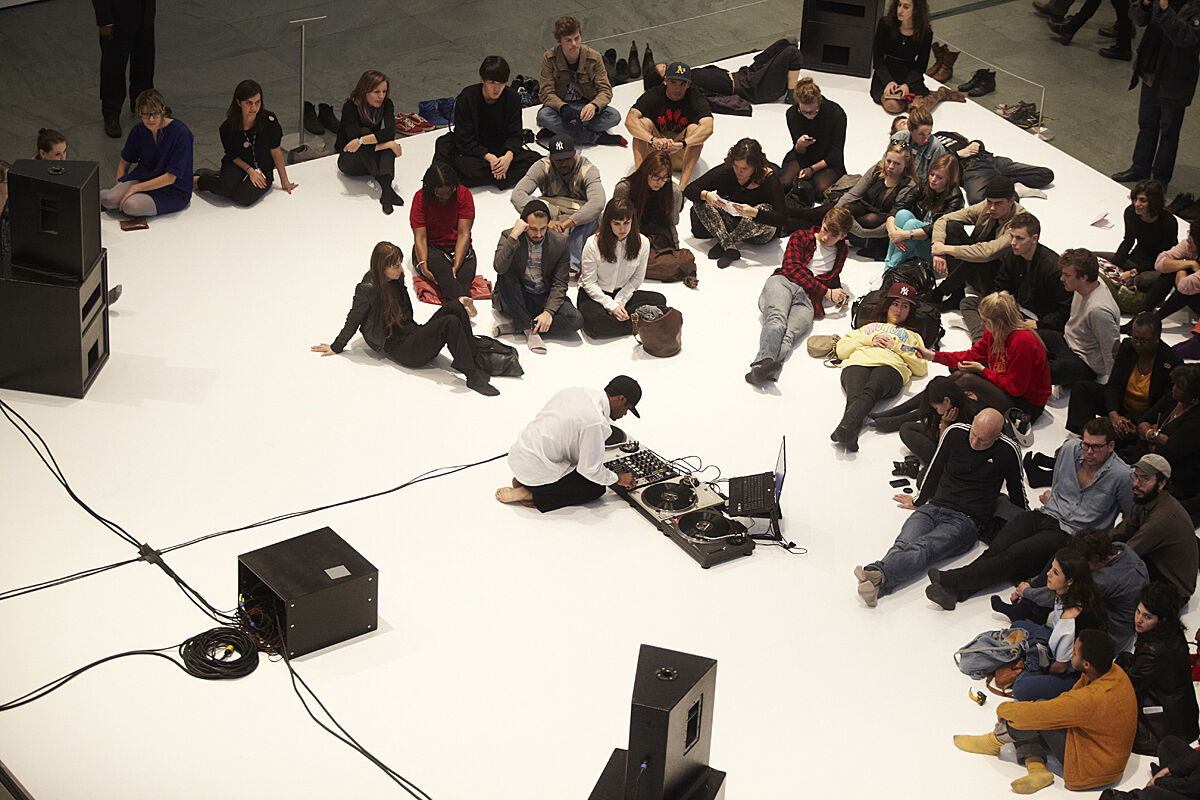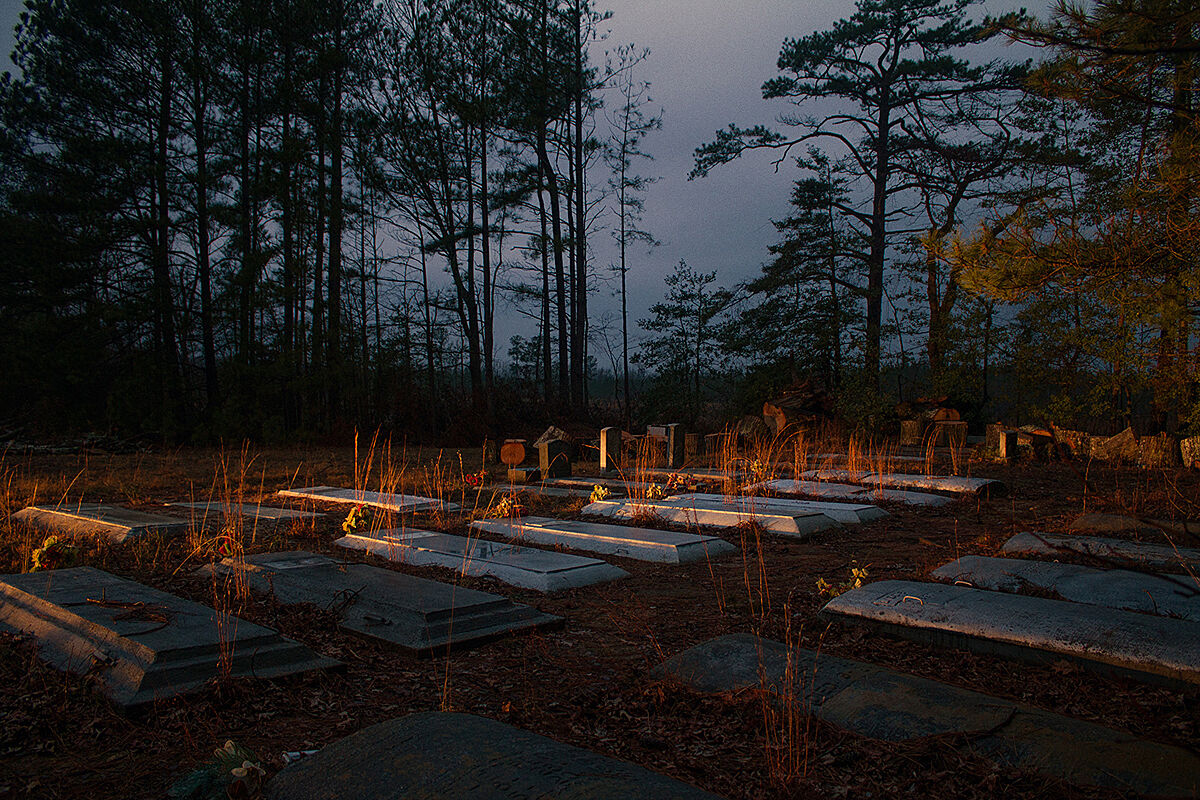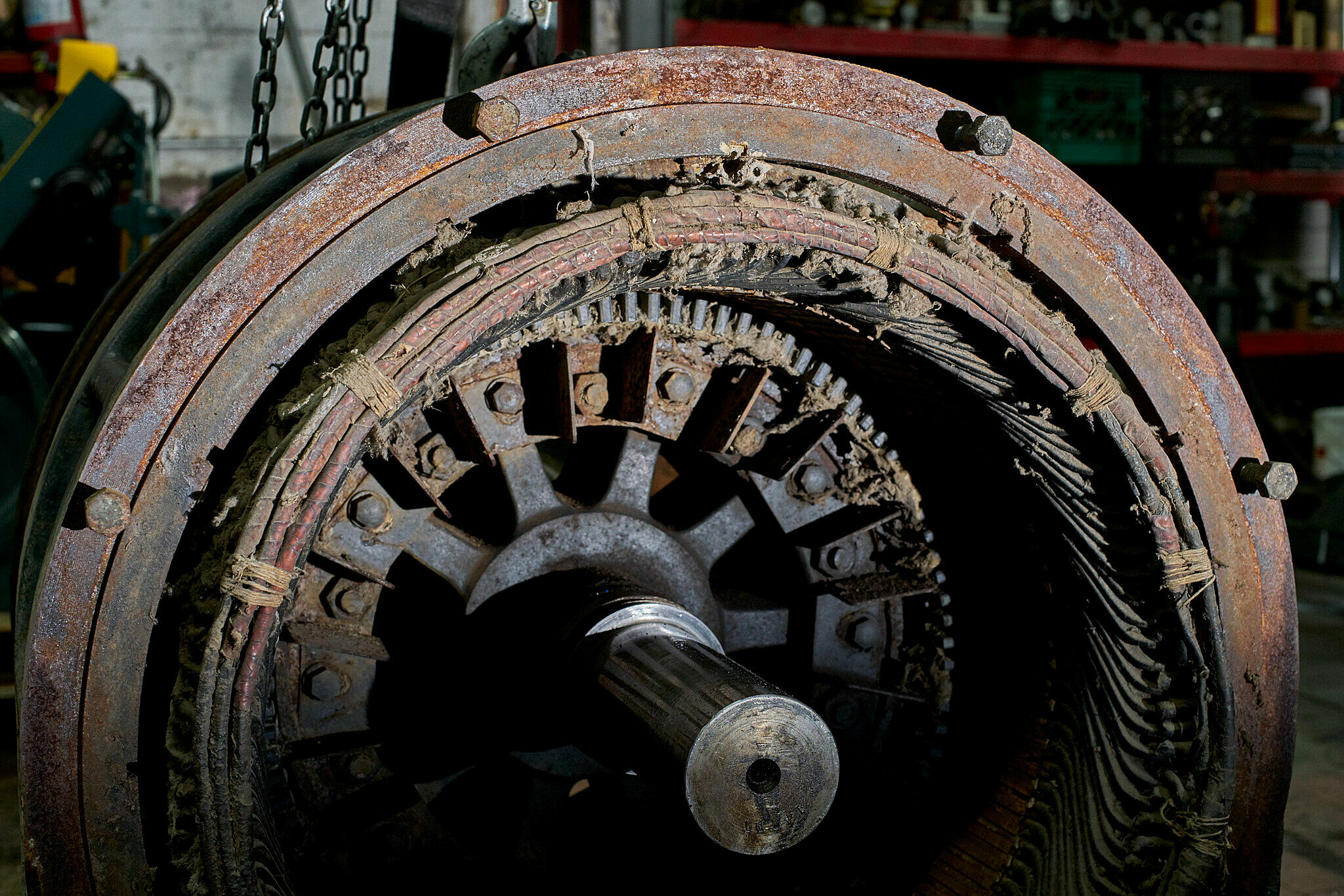Low End Theory
The harvest had happened but some remained, white airy bolls speckling the field amid the trampled branches. This was Kevin Beasley’s first direct encounter with living cotton, on break from graduate school in 2011, during one of his family’s annual summer reunions in Valentines, Virginia, a little more than a hundred miles from the town of Lynchburg where he grew up. The land where they gathered had been in the family for generations, but for the first time it had been leased, just the past season, to local planters to grow cotton. Beasley picked some, feeling the light fibers between his fingers and surprising himself by the pleasure of the sensation, which stood in stark contrast to the hardship, pain, and trauma endured by so many generations who had been enslaved in service of cultivating the crop—likely including Beasley’s own ancestors.Kevin Beasley, unpublished text shared with the author, 2018.It was almost too much for the artist to process:
This wasn’t about a plant or a field for me. These are containers for a much more painful and complicated history in which the nuances are somehow obfuscated. I couldn’t collect myself until I saw my mother in the kitchen, cracking jokes about being a slave family . . . The complexity of the circumstances is far deeper than I can put language to, still . . . And so it felt imperative for me to synthesize these experiences through objects and material.Ibid.
That step towards understanding through synthesis—reconciling personal biography, place, histories, memories, physical experiences—took Beasley further south, to Alabama, to purchase a cotton-gin motor that a man named Bobby had posted on eBay:
Up for sale is an antique GE electric Induction motor. This motor came out of a Cotton Gin in Maplesville, AL. It actually ran the Cotton Gin. The motor run when put up, but hasn’t run in over 30 years. This is a very large and heavy motor. It is about 3–4 feet high and 2–3 feet across. These are the numbers on the tag:
Model 17181
Type 552 8 75 900
Form B
Three Phase 60 CYC
Volts 220
Amp 182
Speed Full Load 875
No. 5055643
75 Hp Continuous 40Ibid.
A poem of specifications, the online ad referred to a machine that was much more than its amperage draw and horsepower output. The motor played a part in one of the oldest industries in the United States, one that, for better and for worse, helped to shape the country into what it is today. While this particular motor would not enter into that story until the mid-twentieth century, Eli Whitney’s invention of the cotton gin in 1793, ten years after the United States won its independence from Great Britain, almost paradoxically intertwined the industrialization of cotton production in the U.S. with the brutal institution of slavery.Eli Whitney (1765–1825) and Harry Payne Whitney (1872–1930), the husband of the founder of the Whitney Museum, Gertrude Vanderbilt Whitney, both descended from the same ancestor, John Whitney, who emigrated from England to Massachusetts in 1635.By automating one intensely laborious stage of the production process—the separation of the fiber from the seed—Whitney’s machine made the cultivation of cotton on slave-owning plantations in the American South profitable. The cotton gin increased efficiency fifty fold, which instead of reducing the workforce, only increased the demand for slave labor to match the increased rate of production, and the U.S. swiftly became the largest cotton producer in the world, providing raw material primarily to textile manufacturers in Manchester, England.Sven Beckert, Empire of Cotton: A Global History (New York: Penguin, 2015), p. 102.Yet this economic success, which arguably helped to secure the fledgling country’s independence, would not have been possible without the morally abhorrent importation of slavery or the equally abhorrent genocide of Native Americans, both of which cast an indelible stain upon the country’s founding myths. As described by historian Sven Beckert in Empire of Cotton, “This was a land whose social structures had been catastrophically weakened or eliminated, a land without most of its people and thus without the entanglements of history. In terms of unencumbered land, the South had no rival in the cotton-growing world.”Ibid, p. 105.
Plantation owners quickly seized upon their advantage to build large industrial-scale operations. By 1860, 85 percent of cotton was cultivated on plantations that were a hundred acres or larger; more than 90 percent of the country’s enslaved population was consigned to work these operations, in a system that stripped away the culture and history of Black people to make use of them as mere property and tools.Ibid., p. 110.As artist and filmmaker Arthur Jafa has said describing African Americans’ foundational role in the story of American industrialization, “We were the first technology. We are the technology that drove the American industrial engine.”Arthur Jafa, quoted in Kate Brown, “‘Black People Figured Out How to Make Culture in Freefall’: Arthur Jafa on the Creative Power of Melancholy,” Artnet, February 21, 2018.
The exploitative relationship between African Americans and the production of cotton did not end after emancipation. If Southern planters had earlier embraced the technological advancement of the cotton gin, in the wake of Reconstruction they set about creating a system designed to approximate as close as possible the antebellum status quo, disenfranchising and disempowering the Black population both through discriminatory laws and though extralegal means of white terror. The majority of Blacks remained in the South with little opportunity but to work the same land, this time as sharecroppers, and it was not until the 1930s that Southern planters began to mechanize the cultivation of cotton in ways that had already been adopted by farmers in the West.For an examination of cotton production during Reconstruction and after, see Beckert, Empire of Cotton, chapter 10, as well as Gene R. Dattel, Cotton and Race in the Making of America (Chicago: Ivan R. Dee, 2009), chapters 19 and 22.This time technology would help serve to break the connection between the crop and Black farmers. Given the cost of tractors, automated pickers, and other machines, only large-scale farmers had access to the capital necessary to acquire them. This forced poor white and Black famers alike out of the cotton business and gave Black sharecroppers another reason to join the Great Migration north.
The cotton-gin motor that Beasley acquired in Alabama was an active agent in this story of mechanization. Used on the farm from 1940 to 1973, the machine operated through this period of technological disruption. Such machinery, along with the introduction of chemical pesticides, made farms more efficient, reducing the amount of backbreaking labor required. While the machines did lead to the unemployment of many farmhands, they can also be viewed as the metaphorical wrench that stopped the cycle of labor and debt that defined sharecropping.
While cotton farming was being transformed, the country was experiencing other profound changes. The civil rights movement arose in the South, demanding voting rights, social justice, and equality for African Americans. Selma, which is just thirty miles from Maplesville, was a key site for this struggle, the city from which civil rights activists made three attempts in March 1965 to march to the Alabama state capital of Montgomery in an effort to gain voting rights. Beasley’s motor sat in physical proximity to these historic events—a machine that likely helped replace the labor of the very men and women who were active in the fight for civil rights—working away on a farm between Birmingham and Selma while innocent people were lynched and murdered, while peaceful protestors endured violence at the hands of the police and racist mobs, and while marchers finally crossed the Edmund Pettus Bridge and made their way to Montgomery, a pivotal moment in the movement, which would see federal passage of the 1965 Voting Rights Act less than five months later.
The motor ran for another eight years and then stopped, perhaps due to the shift in global cotton production away from the U.S. and to Asia. The machine fell silent for more than forty years until Beasley had it rebuilt in 2017 and incorporated it into his multipart installation A view of a landscape: A cotton gin motor, which is being shown for the first time at the Whitney. He has placed it within a soundproof glass chamber so that, initially, viewers can see the machine running but not hear it, the sleek contemporary lines of the vitrine standing in visual contrast to the motor’s worn patina. The sensory experience of visitors is reversed in the adjacent room, which Beasley has designed for deep listening, with its low lighting, dark walls, acoustic panels, and carpet. It is here where visitors encounter the sounds of the machine—the physical vibrations of its metal casing, the high-pitched revolutions of its spindle, the barely audible electric hum coursing through its wire windings—captured by various specialized microphones that surround the motor next door in its vitrine and processed by a system of modular synthesizers. Yet there is something else in this sonic mix, something felt as much as heard, hovering at the 20-hertz threshold that marks the low-end frequency of human hearing. It’s the machine conveying the sweat, tears, blood, and song that permeate the land, the soil from which cotton has historically been grown. There are literal sensations emanating from the installation’s subwoofers, percussive soundwaves from the bass bins that move the fine hairs on the nape of the neck. The air vibrates with the history that Beasley excavates by isolating and amplifying the motor’s myriad sounds. In this layered history are collective voices, such as those of the Selma protestors who used music as a form of resistance, steeling themselves in song in preparation for the march to Montgomery. Perhaps this is what ultimately powers the bass lines of Beasley’s sound composition. On March 15, 1965, marchers were repelled by state troopers half a block from the Brown Chapel A.M.E. Church. From within the church, protestors sang:
Oh, freedom, oh, freedom, oh, freedom over me, over me,
And before I’ll be a slave, I’ll be buried in my grave
And go home to my Lord and be free.
No more Jim Crow, no more Jim Crow, no more Jim Crow over me, over me,
And before I’ll be a slave, I’ll be buried in my grave
And go home to my Lord and be free.“Oh, Freedom!,” band 6 of Freedom Songs: Selma, Alabama. A Documentary Recording by Carl Benkert. Folkways Records FH 5594, 1965, 33 1/3 rpm.
In 2012, shortly after he completed his MFA at Yale, Beasley was invited by Ralph Lemon to perform in the atrium of the Museum of Modern Art, New York, as part of the choreographer’s series Some sweet day. Beasley enacted a sound-work-meets-DJ-set titled I WANT MY SPOT BACK in which he played a capella versions of 1990s rap tracks the artist made himself that he then manipulated into overwhelming sounds that shook the walls and windows of the museum. Thinking about the bodies from which the voices of such iconic hip-hop artists as the Notorious B.I.G. and Tupac Shakur emerged, Beasley said, “I got really interested in listening to the breathing in between, like Biggie was a heavy breather . . . I should really listen to that and see if I can extract the low frequencies from just his breathing."Beasley, quoted in Jenny Schlenzka, “Shaking the Museum: Kevin Beasley,” Mousse 41 (December 2013–January 2014), p. 169.Again, the low end serves as the carrier wave.
Sound can be a language unto itself. While sound and music unfold in time like reading, they are visceral, heard through the ear as much as felt through the bones. “The sonic,” Huey Copeland writes in Bound to Appear, his examination of how four contemporary artists have addressed slavery, “has long served as a viable if not unproblematic medium for black folks to refute the falsifications of the visual, to make claims on the human, and to give voice to dreams, desires, and aspects of the self that would otherwise go unheard even if they remain unintelligible.”Huey Copeland, Bound to Appear: Art, Slavery, and the Site of Blackness in Multicultural America (Chicago: The University of Chicago Press, 2013), p. 15.When it comes to conveying humanity, the sonic moves faster than the visual, as if inverting the laws of physics. In Beasley’s sound performance, we hear Biggie breathe—or should we say inspire?—but never see it.
Describing his work with sound in his practice, Beasley has said, “Sound for me is just as physical, tactile and experiential as any other material . . . it’s another material I can use to help understand myself and my environment: where am I located, where are other people located in relationship to me?”Beasley, quoted in Schlenzka, “Shaking the Museum,” p. 169.The listening-room portion of his installation makes Beasley’s concerns palpable. The sounds of the motor are transplanted, not just from the gallery next door but from the deep South. Moreover, Beasley unpacks the motor’s resonances by distributing speakers overhead and subwoofers on the floor that amplify certain sounds in specific sections of the room, creating a landscape for the ear. This is echoed in electronic music producer Jlin’s approach to sound and music. One of the artists invited to perform with the installation, to “play” it, Jlin has said, “I’m definitely one of those people that believes for sure that every sound belongs somewhere. And there are certain sounds or certain movements that can strike me so deep and it opens up a totally different world for me.”Jlin, quoted in Ann-Derrick Gaillot, “For Jlin, the Only Way Is Up,” Fader, May 2, 2017.
Beasley is clear on where these sounds come from. He has had the motor follow the northward route of the Great Migration that the machine helped make possible, from Alabama to Connecticut, where Beasley first showed it on its own in his 2012 MFA thesis exhibition at Yale, and then to the Whitney in New York. The journey is also charted in the new “slab” sculptures he has made for the exhibition. Massive wall-like sculptures made of polyurethane resin, clothing, raw Virginia cotton, and other objects and materials, the three sculptures chronicle Beasley’s relationship to the motor and, more broadly, to the South, reflecting the land with which the machine had for so long been associated, before moving on to Beasley’s first encounter with the motor and then to the Yale campus where it was first displayed. For example, the first slab, The Reunion (2018), resembles a pastoral scene with figures rendered solely through deeply inset du-rags situated in a lush green landscape, not only referencing the Beasleys’ annual family reunions but also cutting through time to suggest ghostly figures who are in the fields not by their own volition. A band of green strapping, appropriated from a cotton bale, bisects the composition, appearing to both slice through the depicted landscape and hold the sculpture together. The strap was stamped by its manufacturer in black “SAM,” which also happens to be the name of Beasley’s grandfather.
This is not the first work to draw connections between Beasley’s family and the land. In his first solo exhibition, at New York’s Casey Kaplan gallery in 2015, he exhibited UNTITLED (FIELD) (2011–15), a photograph taken in the half light of dawn or dusk, depicting rows of graves before a stand of trees. Illuminated by raking, surreal light—from the artist’s car outside the frame—the landscape speaks to different cycles of time. There is the brief time during which the tall grass has grown between graves, and then there is the long time that has weathered smooth the stones in the foreground and seen them sink deeper into the earth than the rows behind. Whether the viewer is aware or not that these are Beasley’s close and distant ancestors laid to rest on the family’s Valentines property, the photograph suggests a full circle, a young artist on the cusp of completing his graduate degree contemplating mortality and his connection to past generations, an intensely private moment that nevertheless speaks to the contradictions inherent to the country at large, a nation that celebrates the possibility of social mobility afforded by education yet is still riddled with systemic racial inequity and violence.
These complex, difficult, and layered histories are not just subject matter to investigate for Beasley. They are woven into life, a life surrounded by family and steeped in generational memory. Through the particulars of his relationship with the South, Beasley addresses a broader American experience, confronting viewers with the hard truths that bind regions, races, and people. To borrow from Ralph Ellison, Beasley poses the famous question, “Who knows but that, on the lower frequencies, I speak for you?”Ralph Ellison, Invisible Man [1947] (New York: Random House, 1995), p. 581.

